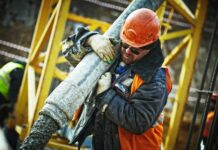
Air Contaminants and Dust Safety Quiz: Test Your Safety Knowledge
Air Contaminants and Dust Safety Quiz : In the fast-paced world of industrial environments, safety is paramount. Air contaminants and dust particles can pose serious health risks to workers if not properly managed. To ensure the safety of employees and maintain a healthy workplace, it’s essential to have a thorough understanding of air contaminants and dust safety measures. In this article, we will take you on a journey through the key aspects of air contaminants and dust safety, testing your knowledge along the way with a quiz. Let’s dive in!
Understanding Air Contaminants
What are Air Contaminants?
Air contaminants are particles or gases present in the air that can have adverse effects on human health. These contaminants can be natural or man-made and are often found in industrial settings, construction sites, and even indoor environments. Common air contaminants include:
- Dust Particles: Tiny solid particles suspended in the air, often generated during various industrial processes.
- Chemical Vapors: Gaseous substances released from chemicals, solvents, and pollutants.
- Biological Agents: Microorganisms, such as bacteria and fungi, that can become airborne.
- Fumes and Smoke: Produced during welding, soldering, or burning processes.
Health Implications
The presence of air contaminants can lead to various health issues, including:
- Respiratory problems
- Skin irritation
- Eye discomfort
- Allergic reactions
- Occupational diseases
Dust Safety Measures
Dust Control
- Engineering Controls: Implementing equipment and processes that reduce dust emissions.
- Administrative Controls: Proper scheduling of tasks to minimize dust exposure.
- Personal Protective Equipment (PPE): Using masks, goggles, and protective clothing to shield workers from dust.
Ventilation Systems
Effective ventilation systems play a crucial role in maintaining air quality in workplaces. These systems should:
- Provide a constant supply of fresh air.
- Remove contaminants efficiently.
- Be regularly maintained and inspected.
Dust Safety Quiz
Industry Safety Quiz: Test Your Safety Knowledge
OSHA Safety Quiz: Test Your Safety Knowledge
Air Contaminants and Dust Safety Quiz
Radiography Safety Quiz: Test Your Safety Knowledge
Hydrotest Safety Quiz: Test Your Safety Knowledge
Dust Safety Best Practices
- Regularly clean work areas to reduce dust accumulation.
- Conduct air quality tests to monitor contaminant levels.
- Train employees on dust safety procedures.
- Keep emergency response plans in place.
Conclusion
Maintaining a safe and healthy work environment is a shared responsibility. Understanding air contaminants and dust safety measures is crucial for both employers and employees. By following best practices and staying informed, we can minimize the risks associated with air contaminants and ensure a safer workplace for all.
FAQs
1. How often should ventilation systems be inspected?
Ventilation systems should be inspected at least once every six months to ensure they are functioning correctly.
2. What is the primary purpose of Personal Protective Equipment (PPE)?
The primary purpose of PPE is to protect workers from exposure to hazardous materials, including dust and air contaminants.
3. Can air contaminants lead to long-term health issues?
Yes, prolonged exposure to air contaminants can result in long-term health problems, including chronic respiratory diseases.
4. How can I improve the air quality in my workspace?
You can improve air quality by implementing effective ventilation systems, using dust control measures, and regularly cleaning and maintaining your workspace.
























